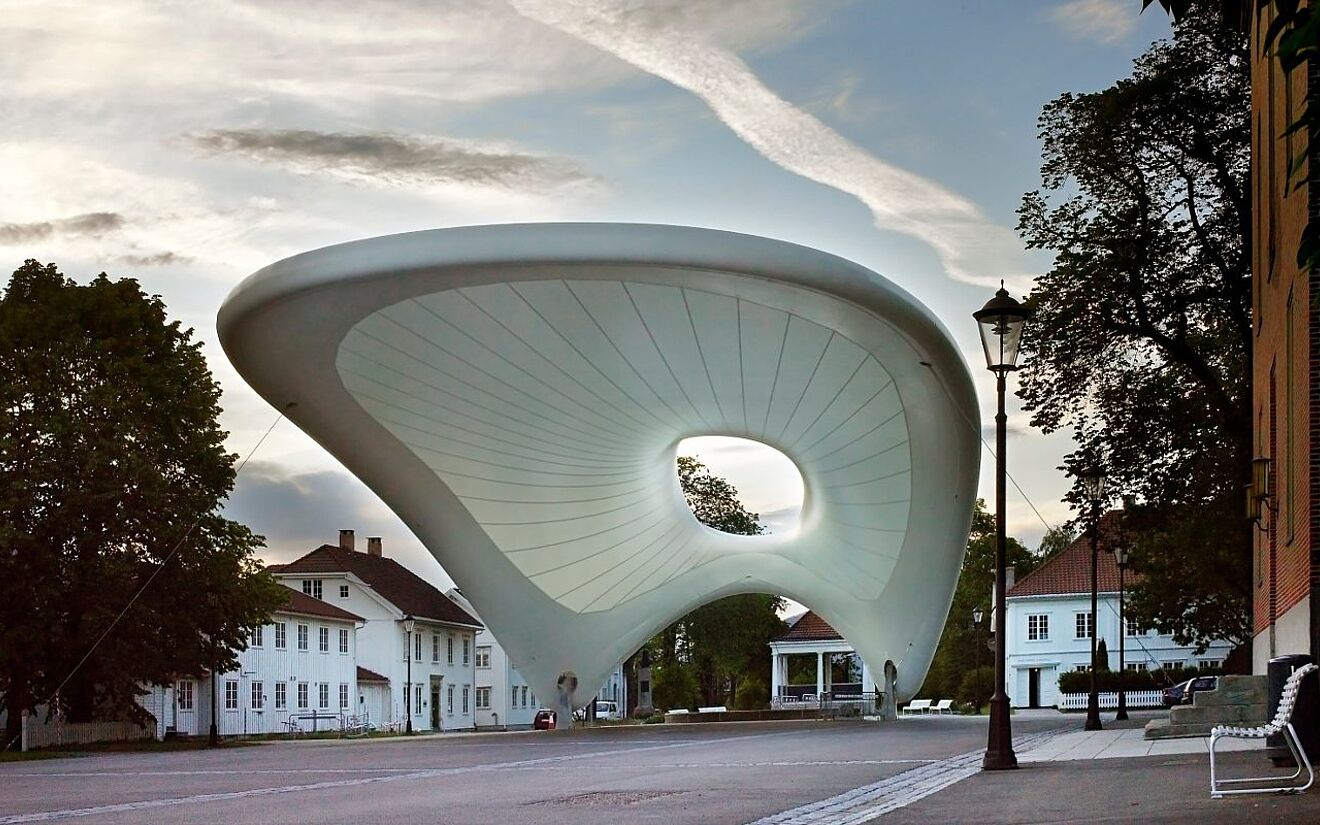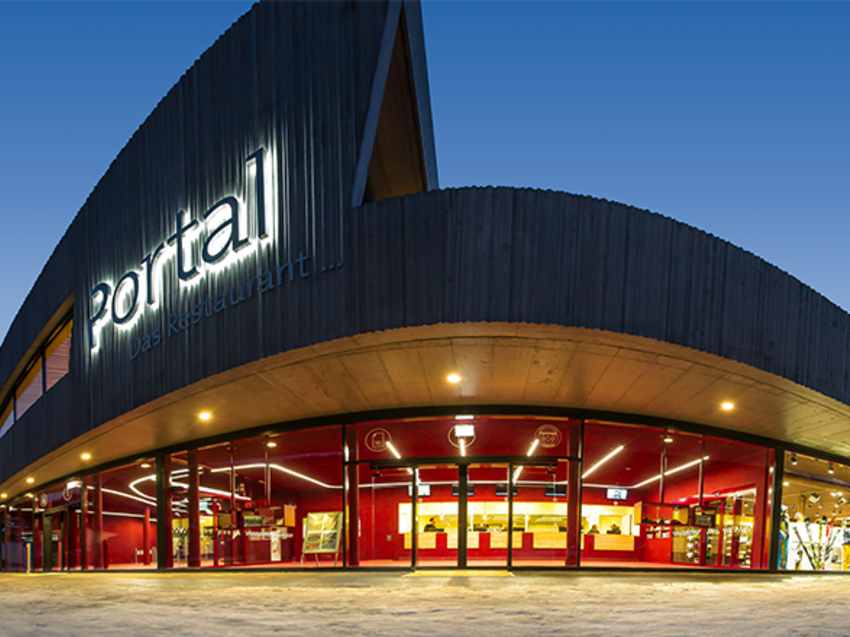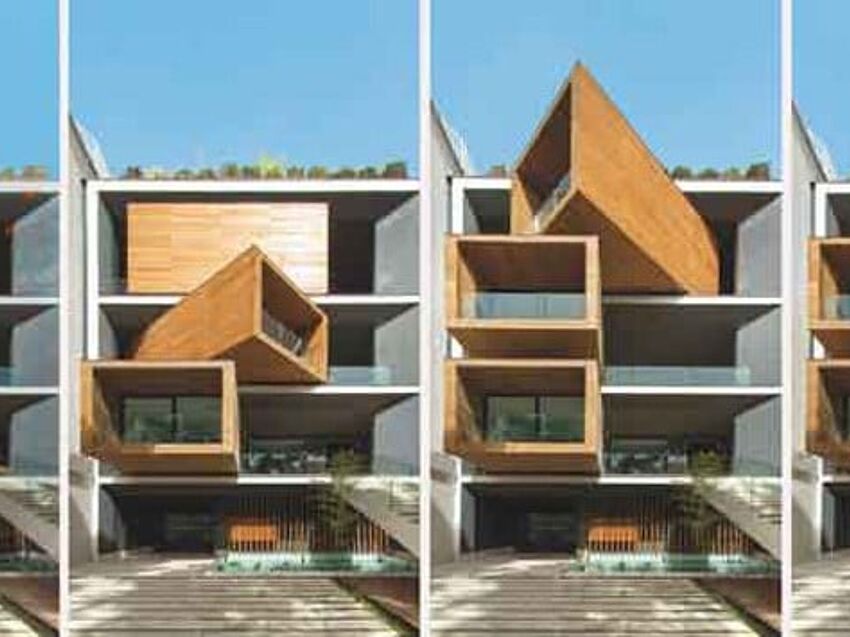Gates to other worlds: Between functionality and aesthetics - Modern transportation buildings
For a long time, textile architecture was understood to mean buildings made of classic natural materials, such as tents. Today, on the other hand, textile architecture uses technologically highly tested materials. Get to know three current, creative architectural projects with innovative building materials.
Tubaloon, Norway
Every year in summer the Kongsberg Jazz Festival takes place. Then the membrane sculpture "Tubaloon" is unpacked and set up within three weeks in the historic centre of Kongsberg, Norway. Since 2006, the installation has been the main stage of the renowned music festival. Tubaloon was developed by the American-Norwegian architects Snøhetta1. The stage consists of a PVC fabric construction that is stretched over the static building like a skin. Despite a height of 20 metres and a length of 40 metres, the temporary installation made of white membrane fabric looks light. This effect is reinforced by the visible ropes that seem to keep Tubaloon on the ground.
The stage takes up the theme of the festival and recalls the forms of wind instruments and the human inner ear. In this way, the installation also approaches organic and sculptural architecture. The translucent membrane shell can be illuminated according to the desired mood. In addition, the fabric of the shell-like form of the stage does not intensify during a concert, so it still sounds and provides an excellent sound at concerts.
Allianz Arena, Germany
One of the most important buildings of textile architecture is the Allianz Arena in Munich, whose façade has carried one of the largest membrane shells in the world since 2005. The Basel architects Herzog and de Meuron2 designed the football stadium with a total area of 37,600 square metres and space for 75,000 people.
The highlight of the building is the membrane structure, one of the most exciting innovations in textile architecture. The membrane facade of the stadium consists of 2,800 pneumatically prestressed cushions made of ETFE film (ethylene tetrafluoroethylene) with a span width of up to 4.25 metres.
It is highly translucent, weighs only 350 grams per square meter and is highly resistant to UV light and other environmental influences. Fans supply the cushions with sufficient pressure and allow pressure equalization in snow or emerging wind. While the membrane cushions on the roof are transparent, the facade cushions are white. The 25,000 fluorescent lamps in the stadium, for example, allow the stadium to shine in several colours depending on which club is playing.
the light within, Germany
Angela Glajcar3 developed the in-situ installation "the light within" for the KunstKulturKirche Allerheiligen. In this large-scale installation, the Mainz artist works with several strips of glass fabric that are horizontally superimposed on one another in the interior of the church and the church corridor. Via a light dome, daylight hits the translucent layers, which are 1.5 meters wide and between 12 and 18 meters long. The glass fabric is translucent and reflects the sun's rays, resulting in different lighting moods depending on the time of day. Seen from below, the installation creates a piece of intimacy in a large nave. The translucent light and the lightness of the material prevent the fabric panels from appearing constricting and open up new perspectives on the room for the observer.
Textile construction has been given a new direction by technological materials such as glass fabrics and ETFE films. The fabrics make it possible to implement lightweight construction concepts that enable new spatial experiences, especially in the interplay of transparency and LED lighting.
Other traditional building materials, such as wood, also undergo such architectural reinterpretations. Read how skyscrapers are created from natural materials in the article "With wood high up: 3 superlative wooden high-rises".
1snohetta.com/project/58-tuballoon-kongsberg-jazz-festival
2 www.herzogdemeuron.com/index.html
3 www.glajcar.de/installationen/projekte/index_inhalt_16.html




